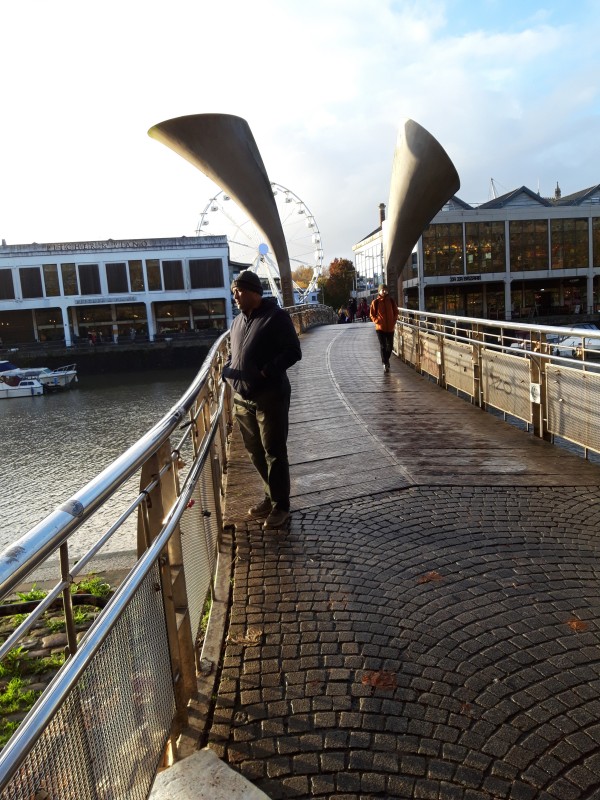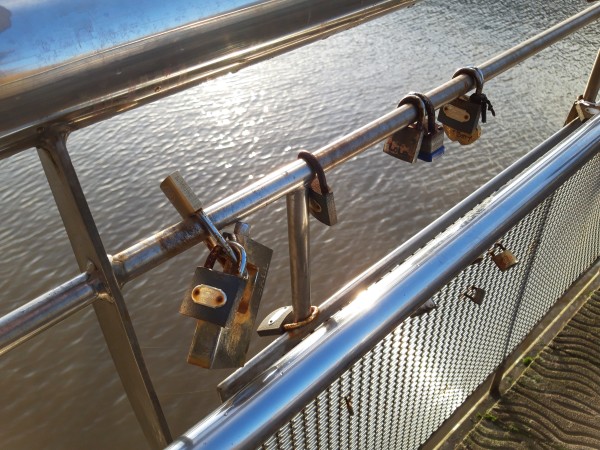One of the many bridges that crosses Bristol’s city docks is Pero’s Bridge which spans St Augustine’s Reach, formerly St Augustine’s Trench. It is a pedestrian bascule bridge, linking Queen Square on the eastern side and Millennium Square on the west.

It was opened formally in 1999 by Paul Boateng MP, then a Home Office minister.
The bridge is named after Pero, also known as Pero Jones, who lived from around 1753 to 1798, arriving in Bristol from Nevis in the Caribbean in 1783, as the slave of the merchant John Pinney (1740–1818) at 7 Great George Street.
Hundreds of people now attach padlocks – so-called ‘lovelocks’ – to the bridge as a sign of affection to each other. This is a practice that began on the Pont des Arts bridge in Paris.

The city council does not technically allow padlocks on the bridge, but they are not routinely removed, and over the years hundreds – possibly thousands – have been attached to it, which could just affect the proper operation of the bridge.
Your ‘umble scribe wonders if those who attach padlocks – a means of confinement and restraint -to the bridge have really thought through the implications of their action. It is, after all, named in memory of an enslaved person.
Moreover, your correspondent is not the only person with misgivings.
A petition has been launched by Helen Tierney calling on the Mayor of Bristol to order the removal of the padlocks and to ban any more being placed on there. The petition reads as follows:
To Marvin Rees, Mayor of Bristol. In the heart of Bristol is a pedestrian bridge crossing the harbour. The City Council agreed the name Pero’s Bridge to honour a young enslaved African, Pero Jones, who in the 18th century was sold into slavery aged 12 & brought by his ‘owner’ to live in Bristol. Pero was never granted his freedom & died enslaved. A tiny plaque by the bridge tells this story.
Pero’s Bridge is now defaced with thousands of padlocks, so called ‘lovelocks’ locked on to its structure. The keys most likely dropped into the water below. Only a few steps from the bridge is the place where, in 2020, the statue of slave trader Edward Colston was thrown into the harbour. I call upon the Mayor & City Councillors of Bristol to remove these hideous padlocks, not symbols of love at all but of oppression down the centuries, of enslaved people chained & padlocked with the keys thrown away, those people disrespected still today in the very place where they should be honoured.
Beneath the petition, Ms Tierney has added: “Pero’s Bridge is named after an enslaved person, someone our city chose to honour by naming the bridge for him. To have it weighed down by the very symbols of oppression disrespects his memory“, to which your ‘umble scribe would add that those affixing padlocks to the bridge have clearly considered the implications of their action.